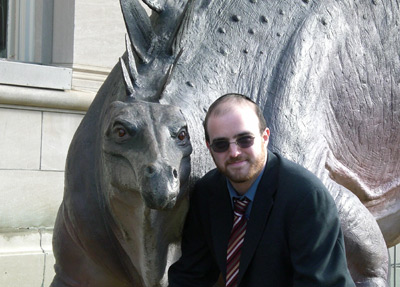Bread of Affliction (someone else's dvar haggada)
A dvar haggada by a friend of mine from my Israel days, Luke (Lev) Hawley. He presented this last year, when each participant had to bring a speech, thought or activity about a certain part of the seder. My part was the midrashim in Magid. Luke talked about matza...
(minor editing)
"This is the bread of our affliction which our ancestors ate in the land of Egypt; let all those who are hungry enter and eat thereof, and all who are in distress, come..."
Many teachers relate the rising that the yeast produces in bread to ego-inflation in the individual. The Talmud compares se'or (leaven, yeast) to the yetzer hara (evil inclination), refering to succumbing to one's base desires as "leavening of the heart". This idea might be fortified by what the Torah has to say regarding the meal offering (Mincha). Leviticus states: "The mincha offering may not be baked into leavened bread (chametz)" (Leviticus 6:10). Furthermore, any burnt offerings are to be free of se’or "because all se'or (leaven) may not be burned as a fire offering to Hashem" (Leviticus 2:11). Based on the Talmud’s analogy, one may conclude that we must be careful not to include the very thing which caused us to sin in the medium which provides forgiveness — therefore no se'or, a representation of the yetzer hara, could be included in an offering to Hashem.
Well, we’ve all heard this one before, and I’ve never been able to understand why a merciful God would want us to celebrate a holiday like Pessach by utilizing the Matzah as a warning against the dangers of sin and ego. It’s not that we shouldn’t guard against the dangers of sin, etc., its just that it seems a little out of character considering the joyful and revelatory nature of the holiday. There are other holidays for sin. This one seems to be about freedom and nationhood. I don’t believe that the prevalence of matzah in the seder correlates to the prevelance in our thoughts of the evils of sin.
With regard to nationhood, the elimination of leaven is a way to express separation from Egypt. Leaven provides ‘life’ to bread in that it makes it grow and rise. When I was having problems learning how to make bread, it was pointed out to me by a baker that (unlike other forms of cooking) when one made bread one was dealing with a living thing. The sponge of leavened rising dough was sensitive to all kinds of external factors — temperature, humidity, even the way it was handled. Too much pounding or tearing would knock the life out of it and it wouldn’t rise well. Separating all the leaven, the ‘life-force’ from their bread, and only re-commencing their bread baking with leaven acquired outside of the ‘narrow land’ /מצרים=מיצרים/ might stand for a complete break with Egypt, and the inadequacies of how one was nurtured there. The leavend bread we now eat is free of the leaven — the ‘life force’ — of Egypt. But in order to accomplish this separation all leaven had to be eliminated for a while. Indeed, it ultimately became necessary for a separation to be made between those who would enter the land, and the generation that had been raised in slavery. No one who had even eaten of the Egyptian leaven (except Joshua and Caleb) were allowed to enter the land.
Another idea occurred to me a few days ago when strolling through the halls of the Cairo Museum. The statues of the Egyptian gods and kings seem to go on forever. Thousands of statues of gods and kings carved out of every conceivable material — gold, alabaster, stone — in an effort to render variety to a series of static unchanging figures and expressions. And the glory of the pyramids that we saw were rendered by the work of generations of slaves burdened with a single task. Even their gods are slaves, each afflicted with a single task and a single attribute. The goddess of the sky, with stars painted on her narrow body, straddles the earth on all fours for eternity. The kings and queens all wear the same clothing and display the same passive archaic smile for centuries. Their names are bound in cartouches. Only Akhnaten, the monotheistic reformer, changes his god into the solar disk — something remotely life-giving — and himself into a multifaceted human being — an escetic religious contemplator who nonetheless possesses thighs capable of bearing children.
We find this sameness in the matzah we have before us. Can any of us tell one from the other? Don’t they all have the same taste? They’re indistinguishable from each other. Without personality. This is the affliction the Israelites escaped; the affliction shared by slaves, and any so-called ‘free people’ ruled by gods of a singular nature who lack depth and creative vigor. Rather than look at the se’or simply as the yetzer hara, I would prefer to look at it as the spark of something that allows us to become un-afflicted, to grow as individuals, with varying capacities and talents. Just as leavened bread shows variety and can be distinguished, so we, on leaving Egypt are given the freedom to become ourselves. The eating of the matzah — the ‘bread of affliction’ — is a reminder of the state from which God brought us, and by the absence of leaven we are reminded of the great freedoms of which we are now allowed to partake.



0 Comments:
Post a Comment
<< Home